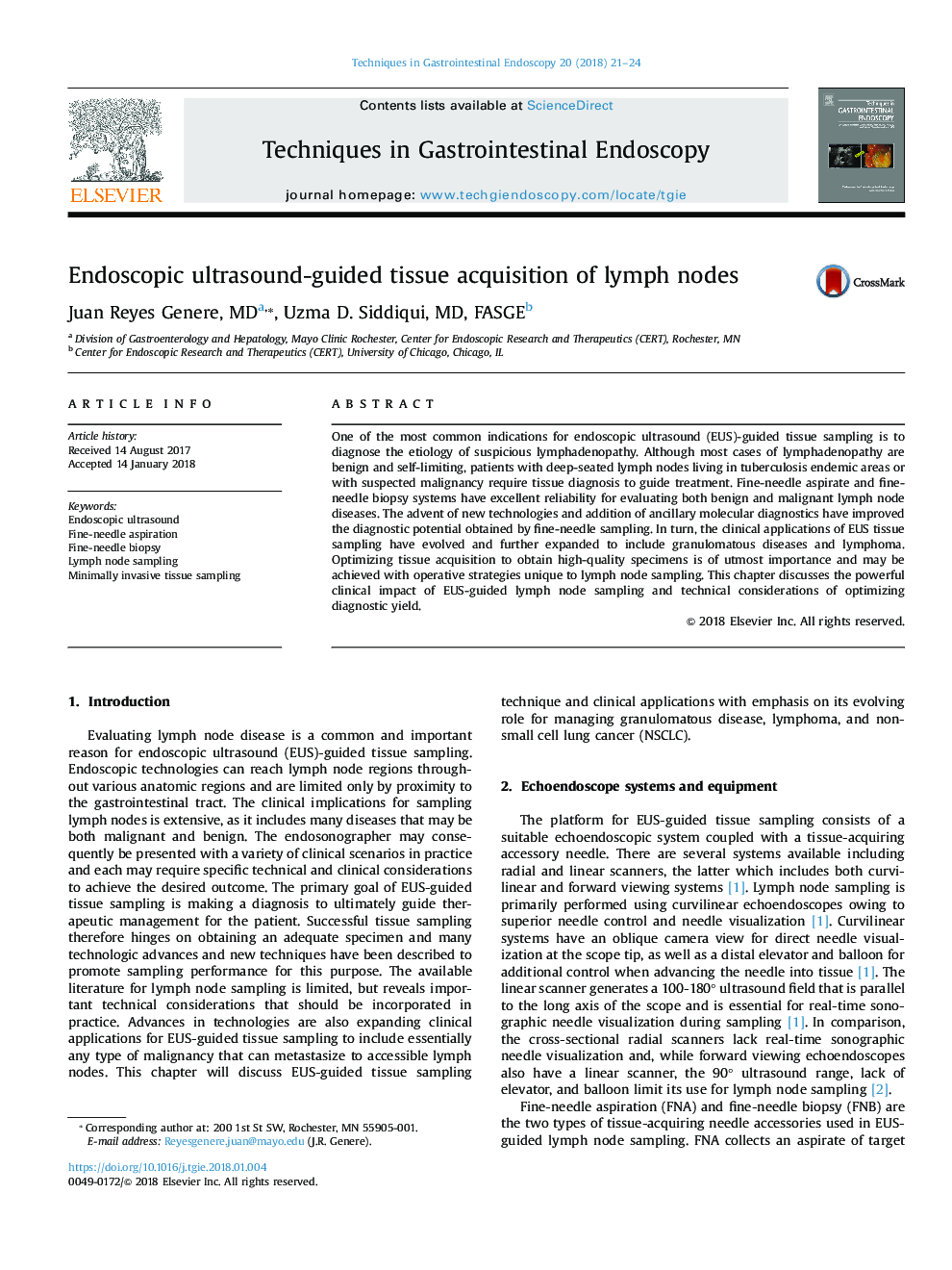| Article ID | Journal | Published Year | Pages | File Type |
|---|---|---|---|---|
| 8732238 | Techniques in Gastrointestinal Endoscopy | 2018 | 4 Pages |
Abstract
One of the most common indications for endoscopic ultrasound (EUS)-guided tissue sampling is to diagnose the etiology of suspicious lymphadenopathy. Although most cases of lymphadenopathy are benign and self-limiting, patients with deep-seated lymph nodes living in tuberculosis endemic areas or with suspected malignancy require tissue diagnosis to guide treatment. Fine-needle aspirate and fine-needle biopsy systems have excellent reliability for evaluating both benign and malignant lymph node diseases. The advent of new technologies and addition of ancillary molecular diagnostics have improved the diagnostic potential obtained by fine-needle sampling. In turn, the clinical applications of EUS tissue sampling have evolved and further expanded to include granulomatous diseases and lymphoma. Optimizing tissue acquisition to obtain high-quality specimens is of utmost importance and may be achieved with operative strategies unique to lymph node sampling. This chapter discusses the powerful clinical impact of EUS-guided lymph node sampling and technical considerations of optimizing diagnostic yield.
Related Topics
Health Sciences
Medicine and Dentistry
Gastroenterology
Authors
Juan Reyes MD, Uzma D. MD, FASGE,
